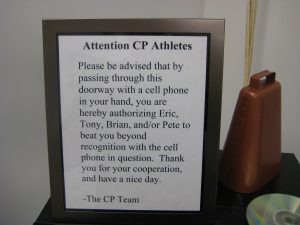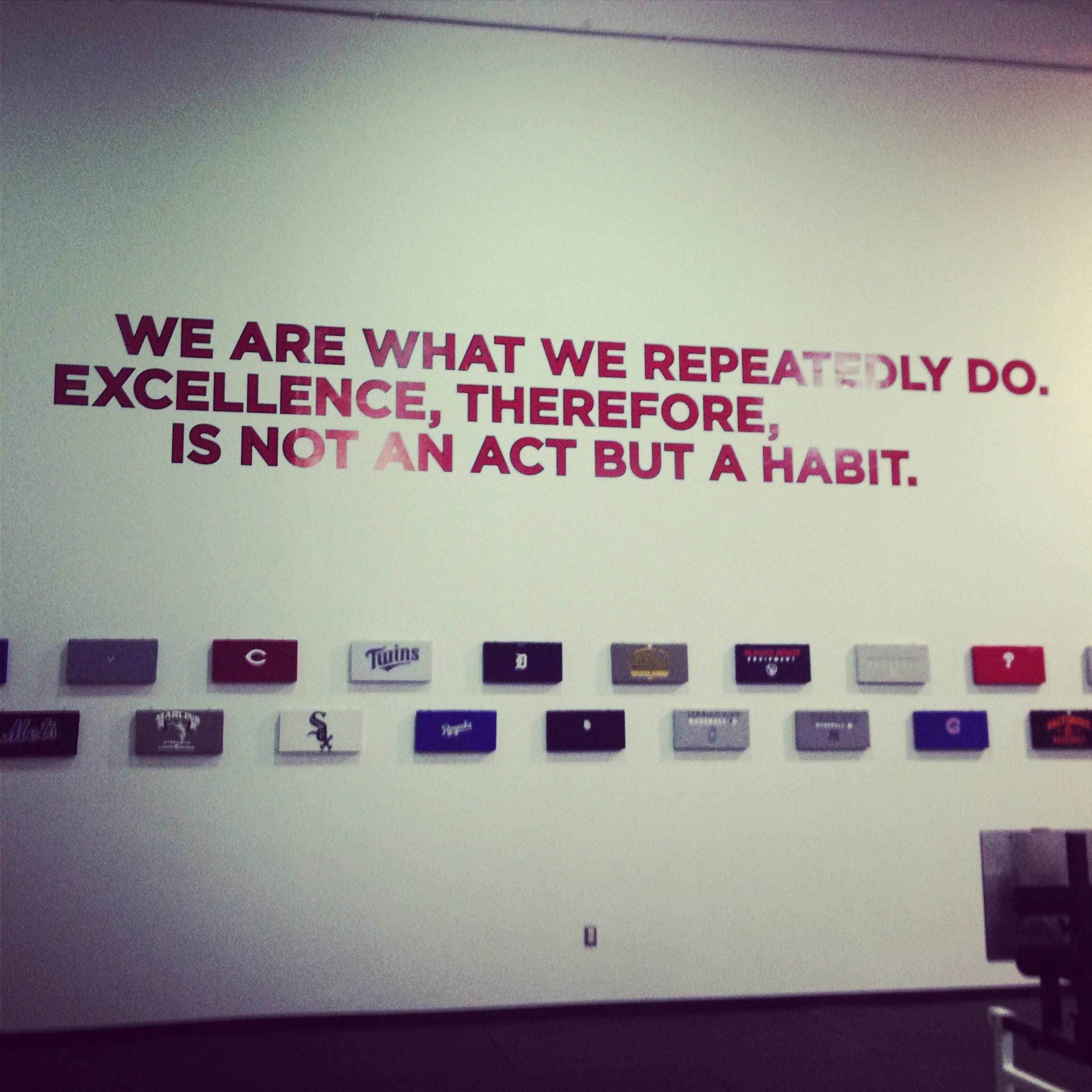I never quite understand the infatuation some fitness professionals have with telling the world how much they’re “grinding” or hustling.” As if to imply their work ethic deserves more praise than the thousands of other coaches and trainers getting up early to, you know, go to work.
What’s more, those who continuously gloat about their grinding prowess and how “busy” they are sure do have a lot of extra time to post 37 different reminders on social media about it.
Of course, this isn’t to insinuate that people don’t actually work their butts off and have a right to brag about it. Someone like Eric Cressey or Joe Dowdell or David Dellanave or Molly Galbraith or Mike Reinold or Mike Robertson or Cassandra Forsythe or any number of fitness pros I know1 who have built a successful fitness business (and have unmatched work ethic) can do whatever the heck they want!
Here’s the kicker, though: they’re not the ones on Twitter and Instagram belaboring over the grind.
In my experience, those who do go out of their way to routinely market to the world about their hustling ways, are generally working exponentially harder to maintain the facade.
A facade that does nothing but mask what’s really going on.
He or she gets up like everyone else, trains people 4-5x per week like everyone else, and takes weekends off like everyone else.
In short: nothing special.
Nevertheless, all of this is to say that hard work – REAL hard work – does enter the conversation and matters. The fitness industry is one super saturated mess and everyone is vying for a piece of the pie.
Everyone is trying to separate themselves from the masses by worrying, first, how to market themselves or “build a brand” before gaining any experience and skills that will actually make themselves marketable.
Most often without understanding that – and please forgive the cliche – there’s a degree of “paying your dues and putting in the time” that’s involved.
“Putting in the time” is not referring to setting up twelve different social media platforms and posting videos of yourself talking to the camera about “time saving hacks” or what you had for breakfast while you’re driving down the highway.
Come on! You’re not that busy that you can’t sit down and talk without risking the lives of other drivers.
Don’t get me wrong: I understand that in today’s world part of running a successful business is staying on task with technology and understanding how to utilize it to build a brand. I’m not a hypocrite.
However, I’m referring to real work.
Real interactions with real people during real training sessions.
Basically, building real skills.
It’s a lesson many up and coming fitness pros need to understand.
It’s not sexy, but it’s what works and helps builds integrity, resiliency, and character. Annnnnd, I’m getting a bit too ranty and taking away the spotlight from today’s guest post.
Recent Cressey Sports Performance coach (and intern), Ricky Kompf, had a similar message to say on the matter. I encourage all young fitness professionals to give it a read below.
Doing Your Time: The Value of a Good Internship
Have you ever heard of the phrase….
“If you’re good at something never do it for free”?
When it comes to being good at your future career (especially in the fitness industry) the phrase should really go…
“If you’re good at something never do it for free and the road to being good at something is paved with a whole lot of free labor.”
Not as catchy but a lot more accurate.
When you begin your career in the fitness industry it’s hard to get a whole lot of hours of experience right away. Most of the time you’ll be in a situation where you are in a commercial gym and you’ll have to build up your clientele in order to get more experience.
Depending on where you are it can take a while to build up the hours you need in order to be a good coach.
With internships you have those hours right away and you’ll be able to hone your craft, become a great coach and build up confidence within yourself…all while under the mentorship of more experienced individuals.
I am a better coach now than I was seven months ago, and I owe that to my internship experience.
The value of a good internship will help you make leaps and bounds in your career as an up and coming fitness professional. Internships give you the opportunity to gain experience, be mentored by some of the top professionals in your field, work with the population you want to work with and expand your network.
I’ve been a personal trainer for two and a half years and have been lucky enough to have some influential people guide me along the way. This led me to take part in two internships that have been the greatest learning experience in my young career.
My first internship was at a successful training facility in Rockland New York called Rockland Peak Performance (RPP).
For three months I worked close to 40 hours a week with a wide variety of clientele that I had previously never been exposed to. This included youth, collegiate, and professional athletes all the way to general population clients of all ages and backgrounds.
As soon as I finished at RPP, I went directly to Massachusetts to start my second internship at Cressey Sports Performance.
For the next four months I honed my craft 32 hours a week coaching on the floor of CSP and worked alongside arguably some of the best strength and conditioning coaches in the country.
Tallying up close to 1,000 hours of experience right off the bat after graduating.
Not too shabby I’d say!
Never under estimate the value a good mentor.
The people you surround yourself with will have huge impact on who you are and who you will become as a person and a professional. When you place yourself in a situation where you are surrounded by people who are successful and good at what they do you have a better understanding as to how you can get there too.
Working with others who have a strong desire to learn and become better is a major benefit to a good internship.
A good coach’s commitment to become better may have a positive impact on you. You may find yourself picking up on the behaviors and habits they have that make them successful. I’ve always seen myself as a hard worker, but throughout my internship experience the phrase work ethic has taken on a new meaning to me. The habits I’ve developed over the past seven months have made me better and more efficient at coaching and communicating with others.
One of the least talked about advantages of pursuing an internship of your liking, is that you can choose the population you want to work with.
In the beginning of your career you have to build up your clientele…meaning you can’t choose who you want to work with; not when bills need to be paid.
By going through an internship you have the opportunity to work with the population you might want to specialize in.
Note From TG: Conversely, it opens up the possibility you may dislike it and realize what you thought you liked, you don’t. In their book, Decisive, Chip and Dan Heath calls this an “ooch,” or, a way to test one’s hypothesis or experience a small sample size.
You may in turn use that as a way to market yourself in the future.
Baseball players come to Cressey Performance because CSP is known for being the go to place to train if you are a baseball player. When you have experience with a certain population that population is more likely to pay for your services.

Finally an internship is a great networking opportunity.
Building a good network in the fitness industry gets you jobs and more clients. Knowing people who know people opens the door to where you want to be.
For example, as a previous Cressey Performance intern, you are a part of a CSP alumni intern page where job opportunities are posted regularly. This is because people in the fitness field know how good of an internship process CSP has and come to Pete and Eric asking if they know anyone good to fill a position at their facility (chances are, they do).
If you have an internship opportunity and are hesitant because it is unpaid, I highly encourage you to consider the opportunities that will open up from the experience.
If you are required to go through an internship as part of your undergraduate degree I encourage you to look at it as an investment in yourself.
Go for the internship that you will be challenged the most from.
This will give you the foundation that you need in order to become successful in this field.
About the Author
Rick Kompf is a SUNY Cortland Graduate with a degree in Kinesiology and a concentration in fitness Development. After completing his degree he went on to perform seven months of unpaid internships and is currently a Personal Trainer for Trillium Personal fitness in Syracuse New York.
Also the Founder of GainzTheoryFitness.com.




 I wrote back:
I wrote back:




 get some work done.
get some work done. I think clients like the idea that they never know what they are going to get that day. It could be a ten exercise circuit, or four mini circuits of 3-4 exercises. It all depends on the cycle of the program that week.
I think clients like the idea that they never know what they are going to get that day. It could be a ten exercise circuit, or four mini circuits of 3-4 exercises. It all depends on the cycle of the program that week. Sports Performance Strength Camp officially launched three years ago and started with only two clients.
Sports Performance Strength Camp officially launched three years ago and started with only two clients.

